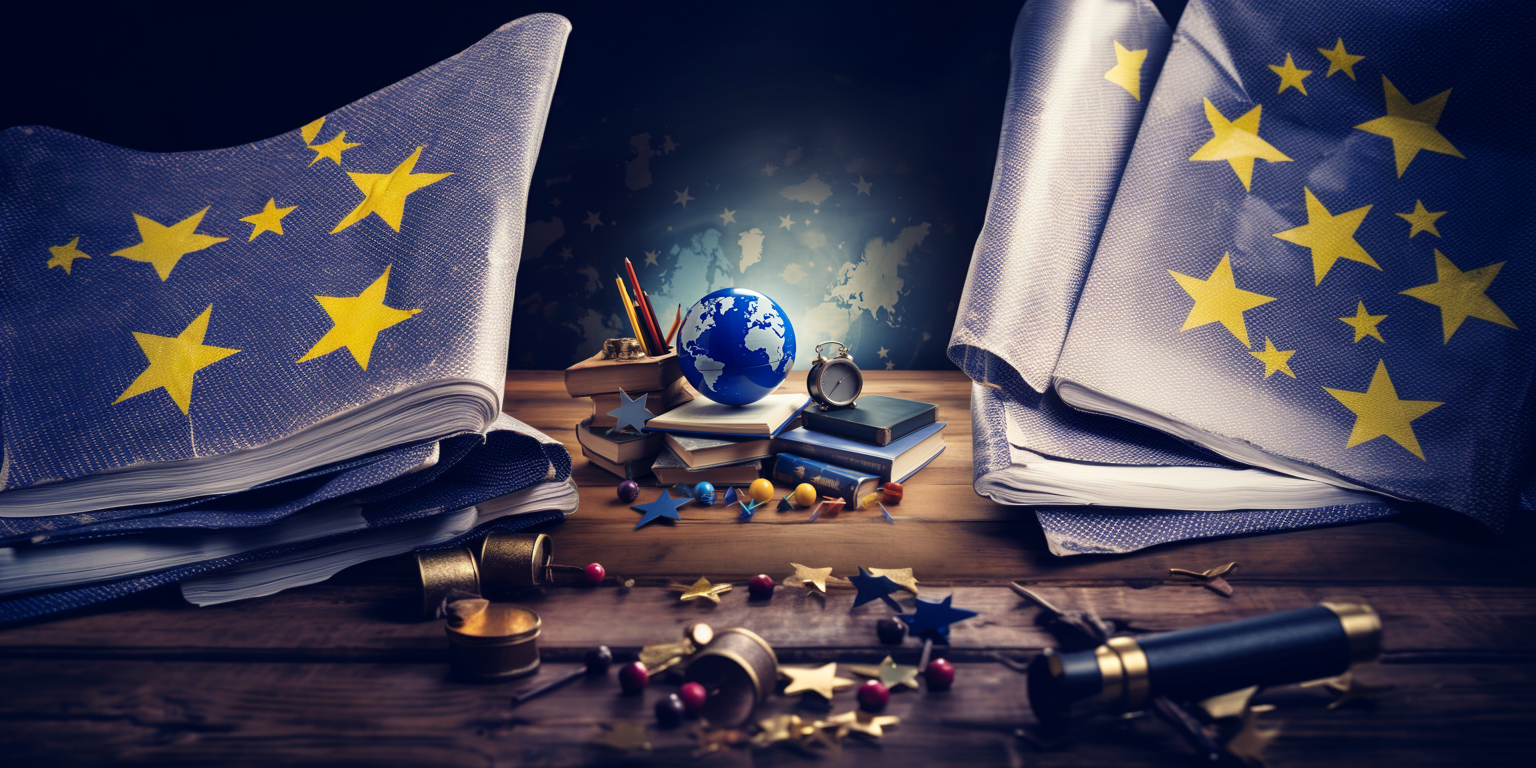The Erasmus Plus program, a flagship initiative by the European Union, is an innovative step towards promoting education, training, youth, and sport in Europe. This program is aimed at boosting skills and employability while also modernizing education, training, and youth work across Europe. Since its inception, it has provided countless students, professionals, and institutions with opportunities to broaden their horizons and make meaningful contributions to society.
Directions of the Erasmus Plus Programs
Key Action 1 (KA1) – Learning Mobility of Individuals
This is perhaps the most recognized part of Erasmus Plus, as it supports mobility in the education, training, and youth sectors. This includes opportunities for students to study abroad, for youth workers to have training or networking periods abroad, and for staff of education and training organizations to attend training abroad. Erasmus+ Key Action 1 (KA1) represents an exciting opportunity for individuals to develop their skills, boost their employability, and gain cultural awareness through international experiences. At its core, KA1 is dedicated to the mobility of learners and staff. This means students, apprentices, young people, and educators can secure funding to study, train, teach, or volunteer abroad. Whether it’s a student pursuing academic excellence at a European university, a teacher enhancing their pedagogical methods through cross-border training, or a young person volunteering in a community project, KA1 ensures they can immerse themselves in a new environment, enriching both their personal and professional lives.
Key Action 2 (KA2) – Cooperation for Innovation and Exchange of Good Practices
This encourages organizations across Europe (and outside Europe) to collaborate and innovate in various educational and youth sectors. Erasmus+ Key Action 2 (KA2) serves as a catalyst for innovation, fostering collaboration across borders. It’s all about partnerships and projects that drive forward the modernization and enhancement of education, training, and youth systems. With KA2, institutions can collaborate to share best practices, develop innovative approaches, or even create new curricula and pedagogies. The aim is to bridge gaps and overcome challenges faced in the educational landscape. Whether it’s a joint project between universities to develop a new course module or a collaboration among youth organizations to address societal issues, KA2 empowers institutions to think globally, act locally, and shape the future of education together.
Key Action 3 (KA3) – Support for Policy Reforms
This focuses on the broader objectives of the European Union to achieve sustainable growth, higher employability, and social equity. It primarily involves dialogue and policy implementation. Erasmus+ Key Action 3 (KA3) is the embodiment of forward-thinking in European educational and youth policy. While the other actions focus on mobility and cooperation, KA3 zeroes in on policy development. It’s a platform for dialogue, fostering discussions between stakeholders to shape educational and youth policies for a brighter European future. Through structured dialogue events, consultations, and initiatives, young people, decision-makers, and other stakeholders collaborate to identify challenges and create solutions. KA3 ensures that the voices of the next generation are not just heard, but actively shape the policies that will affect their futures, fostering a more inclusive and innovative Europe.
Jean Monnet Activities
Named after the founder of the European Coal and Steel Community, these are academic programs that promote excellence in teaching and research concerning European integration. They are available to higher education institutions worldwide. The Erasmus+ Jean Monnet Activities are a testament to the European Union’s commitment to promoting excellence in EU studies worldwide. Named after Jean Monnet, one of the EU’s founding fathers, these activities aim to stimulate teaching, research, and reflection on European integration. They support academic institutions, scholars, and researchers focusing on EU studies, ensuring that the complexities of the European Union are explored, understood, and disseminated. From modules, chairs, and centers of excellence to policy debates and networking, the Jean Monnet Activities work to keep the spirit of European unity alive and relevant, emphasizing its importance in the ever-evolving global landscape.
Sport
This aims at boosting European collaborations on sports. Projects can range from combatting doping, promoting good governance, to fostering dual careers and inclusive sport initiatives. Erasmus+ Sport delves into the world of physical activity, championing its role not just in health, but in bridging cultural divides and fostering community. Recognizing sport’s unique power to unite, this strand of Erasmus+ supports collaborative projects, events, and policy development that promote sport and physical activity across Europe. Its goals extend beyond the field or court, aiming to tackle cross-border threats like doping, match-fixing, and violence, while also promoting values such as inclusion, equality, and dual careers in sport and education. Erasmus+ Sport is not just about competition; it’s about harnessing the transformative power of sport to create a healthier, more cohesive Europe.
Capacity Building
This focuses on cooperation with countries outside the European Economic Area (EEA) and aims to support organizations in the youth and education sectors to enhance their work and foster collaborative developments. Erasmus+ Capacity Building is a beacon of empowerment, focusing on strengthening the global higher education sector. This initiative reaches beyond Europe, partnering with institutions from various countries to bolster the quality and relevance of their higher education systems. Through collaborative projects, institutions co-create innovative curricula, modernize governance, and foster relations between academia and the wider socio-economic environment. It’s not just about transferring knowledge, but co-learning and adapting best practices to local contexts. Erasmus+ Capacity Building is a testament to the belief that education is a universal right, and by enhancing its quality globally, we pave the way for a more interconnected and prosperous world.
Who Can Apply?

Individuals:
- Students at all levels of formal education.
- Apprentices and vocational students.
- Young people, especially those engaged in youth organizations.
- Professionals in the field of education, training, and youth work.
Organizations:
- Educational institutions from pre-school to higher education.
- Research institutions.
- Companies, especially those actively involved in corporate social responsibility initiatives.
- Non-profits, NGOs, and youth organizations.
- Public bodies at local, regional, or national levels.
Requirements
- Eligibility: The specific eligibility criteria can vary based on the direction of the program. Generally, EU member states, EFTA/EEA countries (Iceland, Liechtenstein, Norway), and EU candidate countries (North Macedonia, Turkey, and Serbia) are eligible.
- Partnerships: For projects involving cooperation and partnerships, organizations need to establish agreements with their counterparts from eligible countries.
- Project Proposals: Depending on the direction of the program, applicants may need to submit detailed project proposals highlighting objectives, expected outcomes, participants’ profiles, and budgetary considerations.
- Duration: The duration for which support is offered varies. For instance, student mobility can range from a few months to a year, while strategic partnership projects can last for two to three years.
- Application: The application process can be rigorous and often requires a detailed understanding of the program guidelines. There are specific deadlines and application forms associated with each direction.
The Erasmus Plus program is a golden opportunity for individuals and organizations alike to expand their horizons, foster international collaborations, and contribute to a richer, more integrated Europe. With various directions available, there’s a niche for everyone, be it a student aspiring for international exposure or an organization aiming to make a mark on the European educational landscape.
